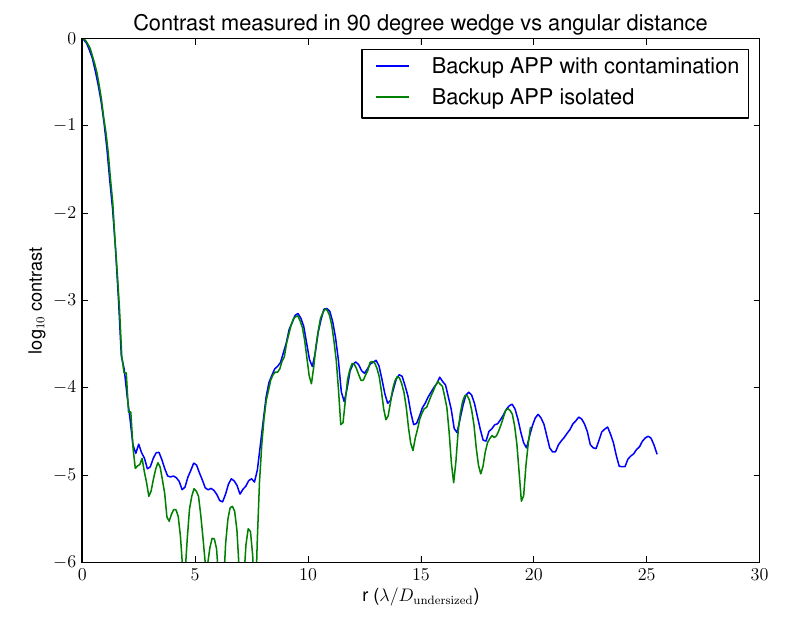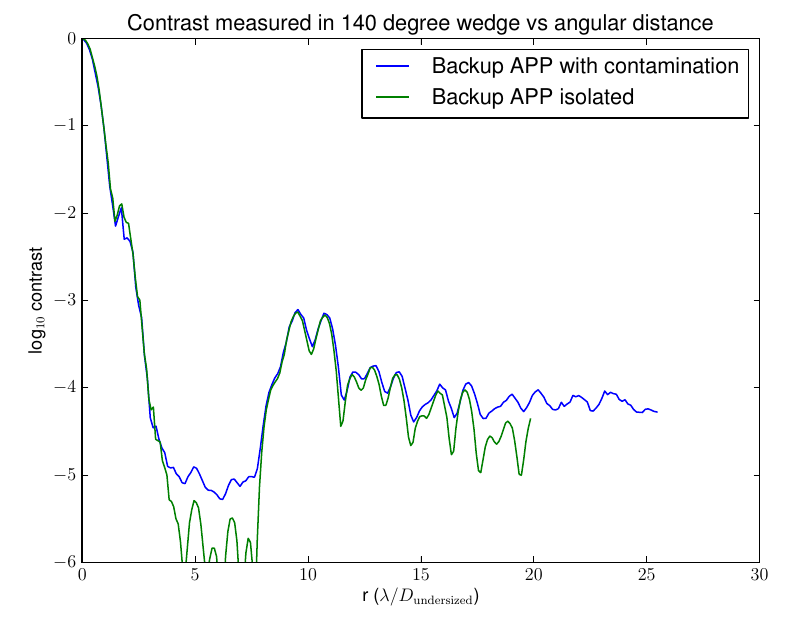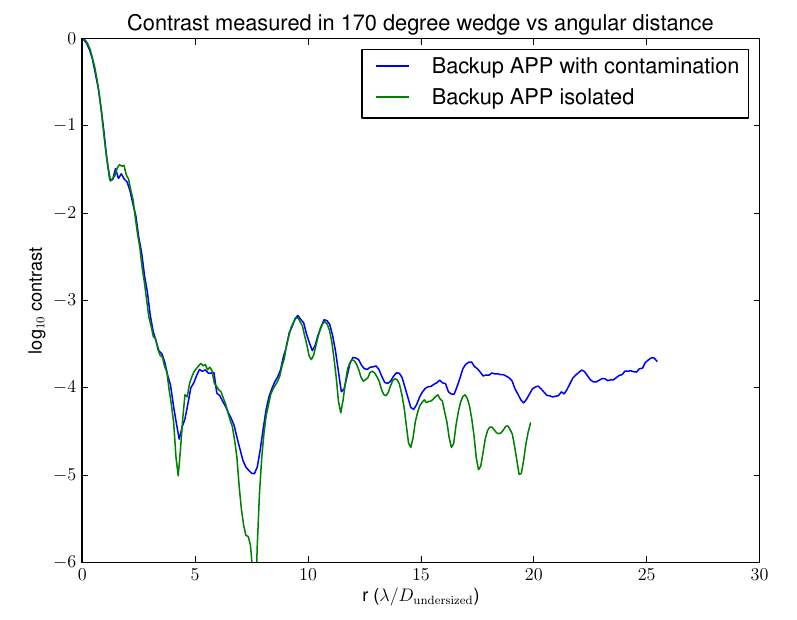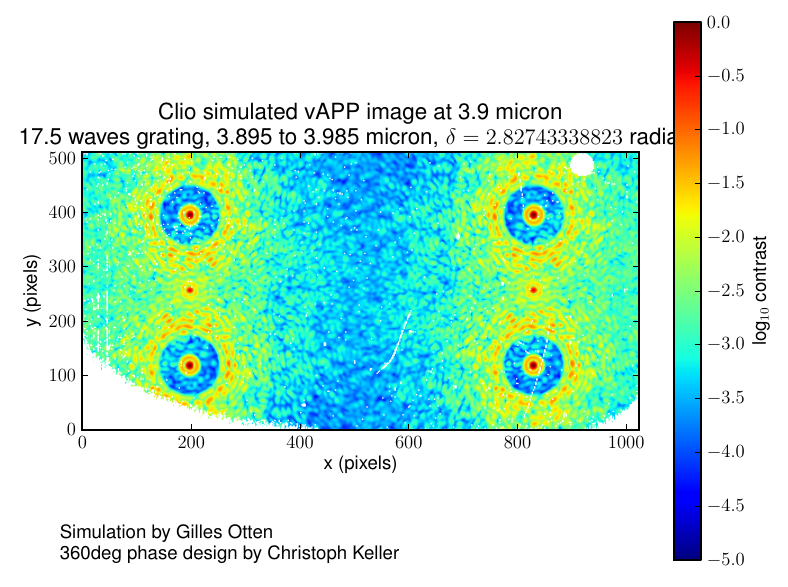We have just finished designing, and are fabricating, new vector apodizing phase plate (APP) coronagraphs for Clio2. We plan to install these during the last week of April, 2015, prior to the 2015A run. We will be commissioning and characterizing them at the beginning of the run. They will be available for observations on a shared-risk basis during 2015A and 2015B. In addition to the usual authorship procedures for MagAO, during 2015A and 2015B any observations with the APPs will include our collaborators at Leiden Observatory (6 additional authors) who have led the development this new type of APP.
The major improvment over previous generations of APPs is the use of liquid crystal technology, and the exploitation of polarization to allow 360 degree observations. We are procuring two new optics.
vAPP A: the first of the new vAPPs is designed to work at 2 lambda/D, with raw contrasts of 1e-5 or better out to roughly 1 arcsecond. This device will work from Ks to M’. We expect best performance in narrow filters. By splitting the beam with a half waveplate integral to the APP, two opposite dark holes are created. Here we show predicted raw PSF contrast including contamination from the other PSF. The simulated image shows the notional layout of the 2 vAPP PSFs on the Clio2 detector, at two different nod positions. All calculations shown here are by Gilles Otten at Leiden. NOTE: these calculations do not model effects such as non-common-path aberrations, residual wavefront errors, and various pupil features. On-sky performance will be worse than shown here.




vAPP B: the second device is primarily a technology demonstrator. It actually has two masks on one substrate. One mask will test a new fully 360 dark hole. The other mask will test using an APP for focal plane wavefront sensing.
